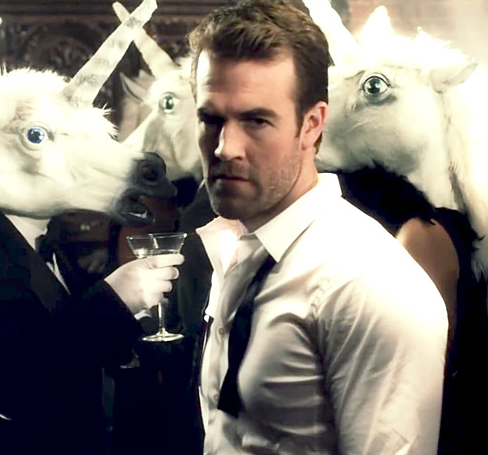There used to be a certain level of artistry to music videos when they first hit airwaves in the 1970s (yes, Aussies were offering them before MTV). More than being about showcasing who the musician knew, a music video’s purpose was both to promote the song and provide a visually creative context for it. Granted, celebrity cameos have always been a thing in this medium, but usually it’s a “before they were famous” sort of phenomenon, like Angelina Jolie in Meat Loaf’s “Rock & Roll Dreams Come Through,” Alicia Silverstone in Aerosmith’s “Crazy” and “Cryin,'” or Courtney Cox in Bruce Springsteen’s “Dancing in the Dark.”

In the current music landscape, cameos appear to be essential to the artist if he or she wants to generate sufficient buzz about it. Between Madonna’s “Ghosttown,” Taylor Swift’s “Bad Blood” and Jenny Lewis’ “She’s Not Me,” the rampancy with which famous people run in and out of these videos is telling of several things. First and foremost, everything in American culture centers around involving a celebrity to garner any sort of attention. The problem with this is that it’s become so normalized that now the quantity of celebrities participating in a single project is also important to how many people will watch it.

In addition, because musicians are so reliant on getting other well-known friends and acquaintances to be in their video, it’s almost as though the narrative itself is irrelevant. With all of the wrong emphasis being placed on person rather than story, is it even possible to judge a piece of music video art objectively? While it was perhaps Michael Jackson’s 1992 video for “Remember the Time,” which featured Eddie Murphy, Iman, Magic Johnson and The Pharcyde, that pioneered the prevalence of this trend, the King of Pop poured his entire soul (and pocketbook) into the production, whereas, now, there’s an obvious lack of heart put forth into anything released on, oy, Vevo.

Even worse is when celebrity power couples join forces à la Kanye West and Kim Kardashian (see: the plotless video for “Bound 2”) or Jay-Z and Beyonce (see: the plotless video for “Drunk in Love”). While cameos were once acceptable novelties in music videos, they are now tireless gimmicks that make every song seem more like a commercial or movie trailer. Someone has got to bring back some dignity and originality to the medium.





















